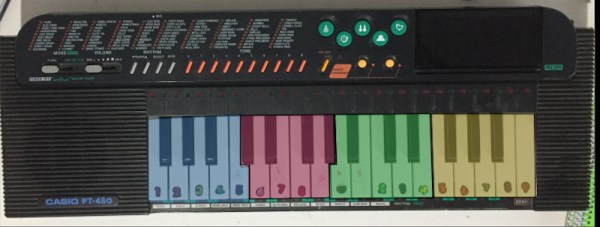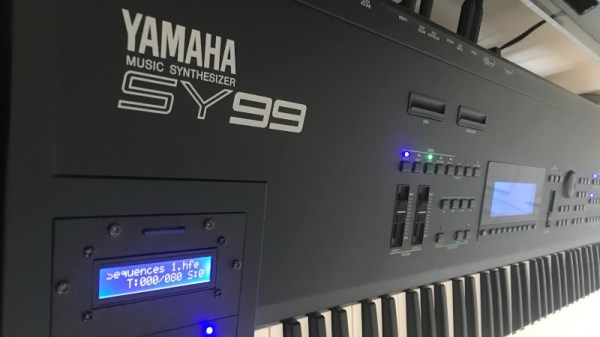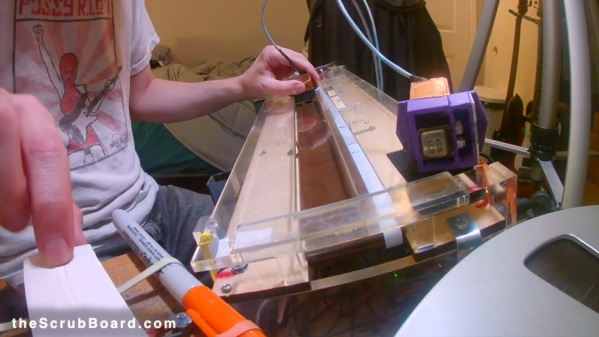It’s hard to imagine 80s Synth-pop without the keytar, and yet this majestic Centaur of a musical instrument rarely gets much love, and their players are often the target of ridicule. It almost seems as if being hung around the neck should be a privilege solely reserved for stringed instruments. Well, [midierror] has at least that part somewhat right then, with the Full On MIDI Leg that is guaranteed to make every keytarist look like a prestigious cellist in comparison.
What looks like the 1987 movie Mannequin taking a dark, Mengelesque turn, is as awesome as it is bizarre, thanks to building the concept of the LE STRUM into, well, a leg. LE STRUM itself is an open source MIDI instrument built by [Jason Hotchkiss], who describes it as “a cross between a Stylophone and an Omnichord”. It consists of a set of buttons to select different combinations of chords, that can than be strummed by scratching an attached stylus over an array of contact pads. However, [midierror], who also distributes a pre-assembled version of the LE STRUM, uses strings instead of contact pads, and a pick for the actual strumming, turning this into a close-enough string instrument.
The only thing missing now is a functioning knee joint, and maybe some inspiration from this MIDI-controlled concertina, and we’d be ready to revolutionize the accordion world with the, uhm, kneetar? And since it’s built around a PIC16, this thigh-slapper won’t even cost you an ARM, just the leg — but enough already with these toe-curling puns.


















